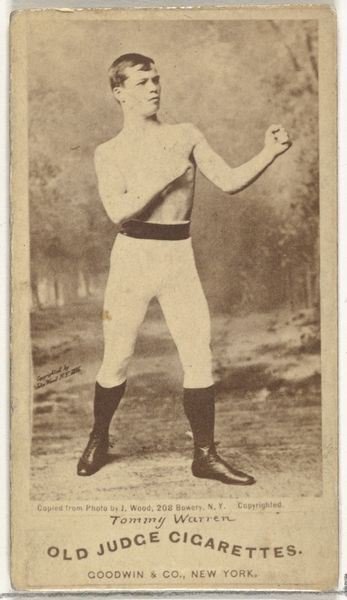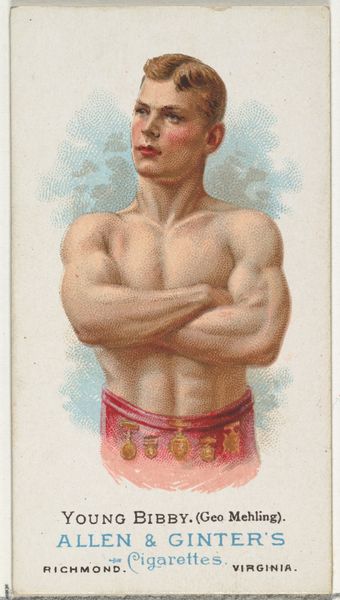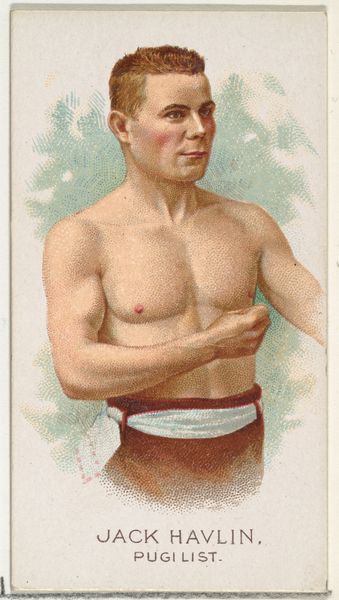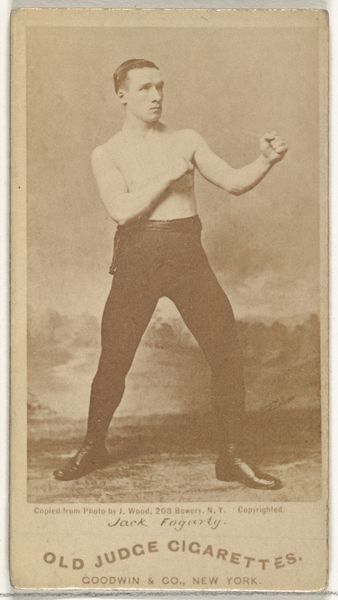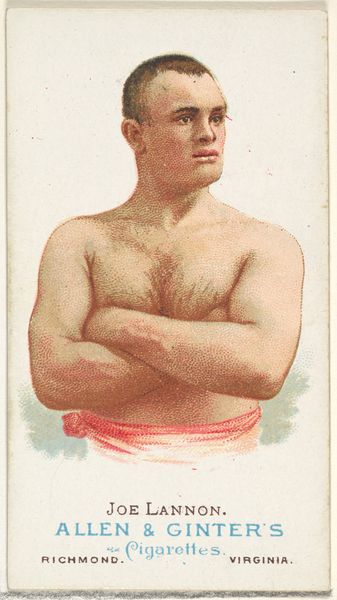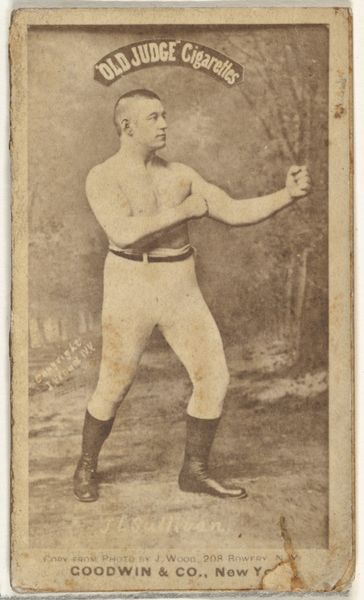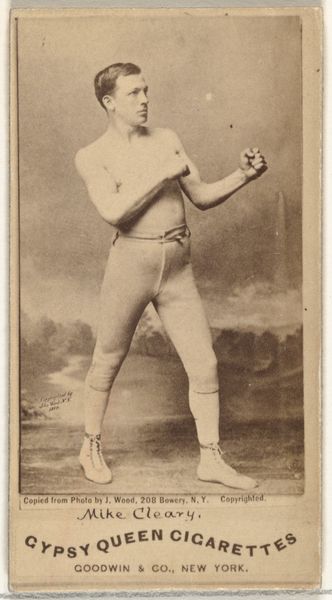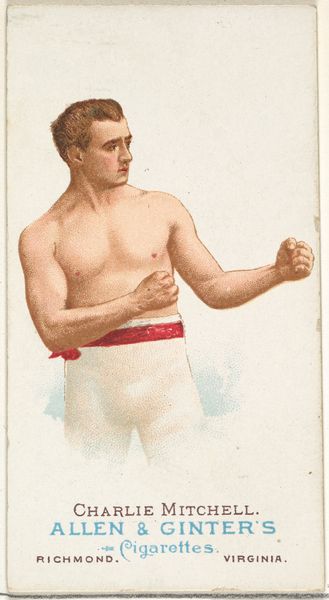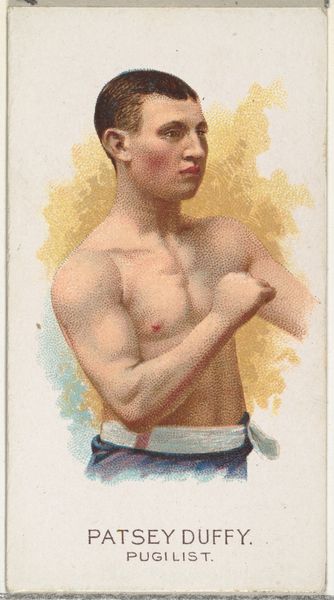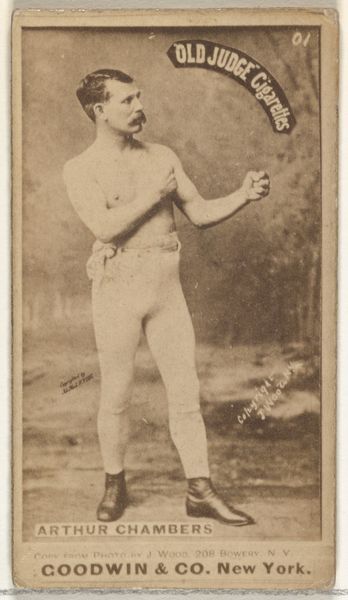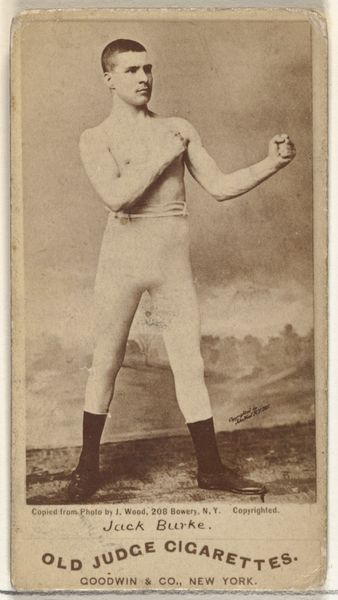
Sullivan, Pugilist, from the Goodwin Champion series for Old Judge and Gypsy Queen Cigarettes 1888
0:00
0:00
Dimensions: sheet: 2 5/8 x 1 1/2 in. (6.6 x 3.8 cm)
Copyright: Public Domain
Curator: This striking print, made around 1888, is titled "Sullivan, Pugilist." It comes from a series of collectible cards produced by Goodwin & Company to promote their Old Judge and Gypsy Queen Cigarettes. What are your initial thoughts? Editor: The first thing that strikes me is the presentation. The rigid pose, the almost caricatured features, they give it the feeling of a performance. A constructed image of masculinity more than a candid portrait, don’t you think? Curator: Precisely! The Goodwin Champions series were mass-produced images. Think of them as proto-trading cards aimed to promote smoking through celebrity endorsements. It's interesting to analyze the politics of imagery when an athletic role model is associated with smoking! Editor: It definitely contextualizes Sullivan himself. We're seeing the marketing of celebrity rather than pure athleticism. How does the artistic style contribute to that message? Curator: The flattened perspective and bold lines reflect the influence of Japanese Ukiyo-e prints, popular in the West at the time. This choice wasn't accidental. It linked notions of the exotic with ideals of physical prowess and manly perfection that Sullivan, as a fighter, embodied for many. Editor: That connection to Ukiyo-e prints reveals another layer of cultural exchange. This image not only depicts a famous athlete, but also integrates non-Western aesthetics into American popular culture. It opens conversations about cultural appropriation and how masculinity is framed within such processes. What implications do you see? Curator: The image itself normalizes this link, solidifying certain cultural narratives about masculinity in sports. Consider how images like this reinforced norms and ideals about athletes and heroes through promotional campaigns, reaching an impressively wide audience. Editor: Yes. Seeing this image today compels us to consider the legacy of those narratives, prompting crucial questions about which bodies and behaviors get centered. It also invites reflection about the effects of marketing strategies linking physical and mental health risk habits to social capital and cultural approval. Curator: Absolutely, by examining pieces such as “Sullivan, Pugilist” we unpack those layers, inviting our visitors to think critically about art as historical record but also its continuous social impact. Editor: A fascinating glimpse into 19th century society; these pocket images offer more insight than we realize, indeed.
Comments
No comments
Be the first to comment and join the conversation on the ultimate creative platform.
